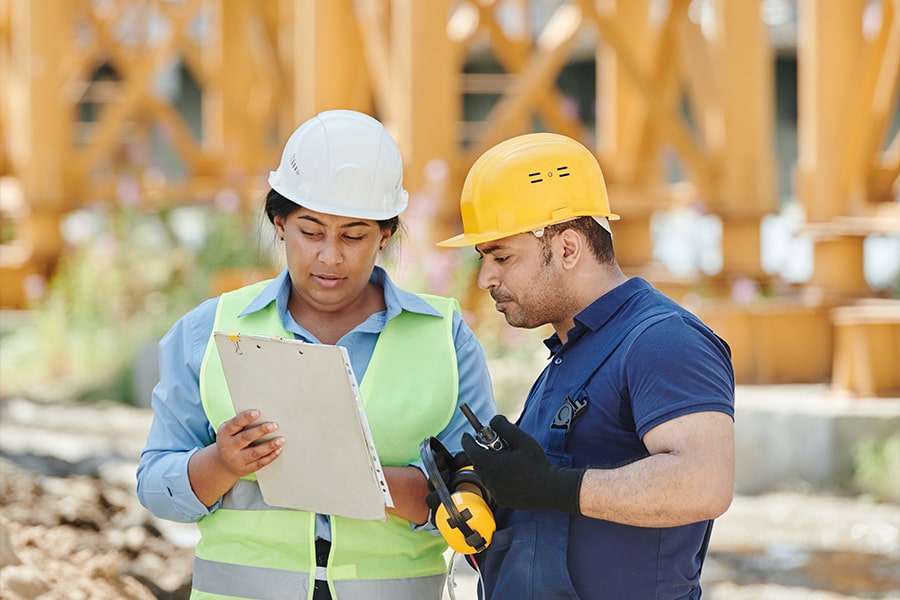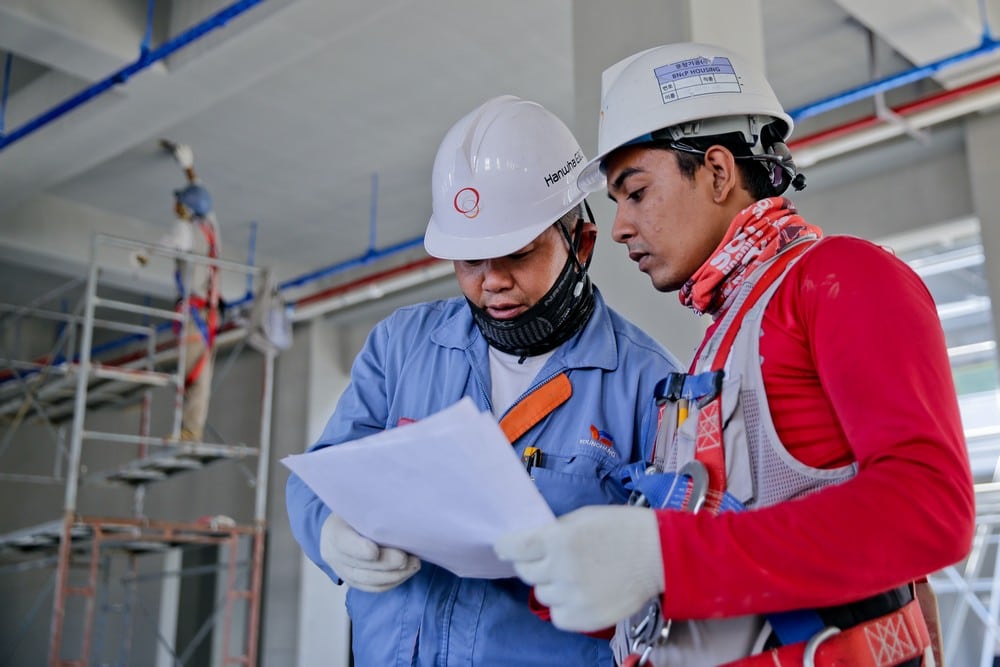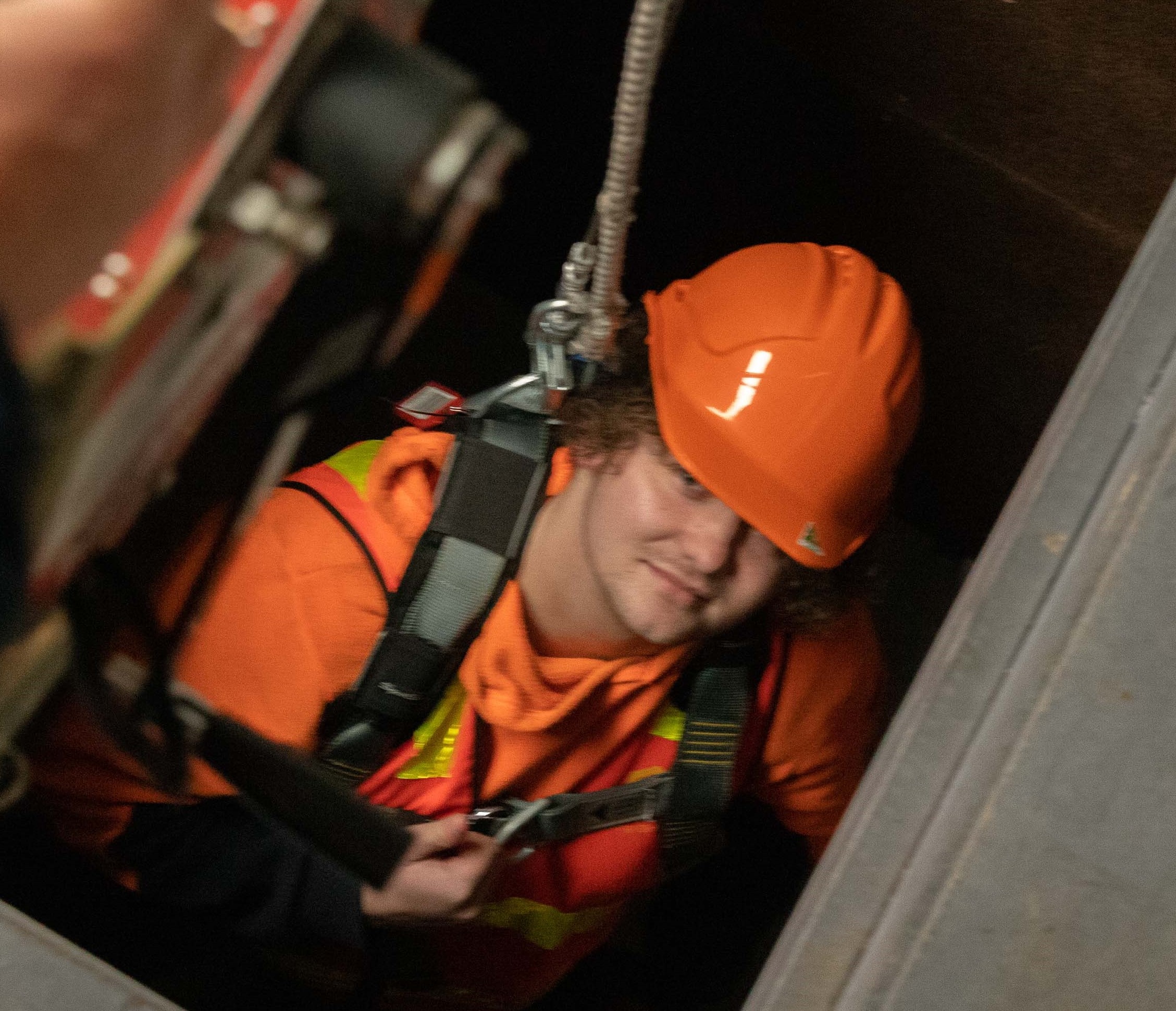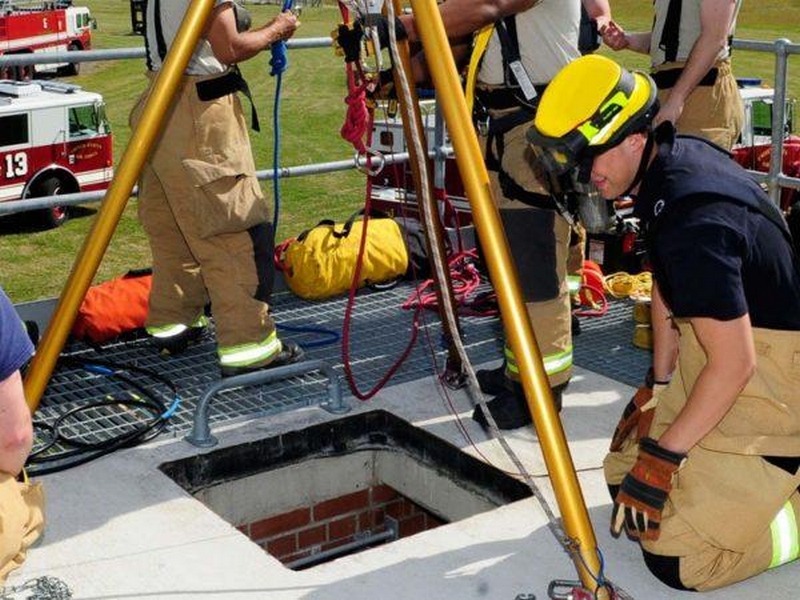Adhering to best practices and safety protocols is crucial for entering and working in confined spaces, where unique challenges and risks abound. Learn how to navigate the complexities of tanks, silos, pits, and pipes safely. This guide offers vital insights into the essential practices and safety measures needed to protect workers in these environments, ensuring everyone is adequately prepared and protected for the task at hand.
Understanding Confined Spaces: Definitions and Classifications
-
Characteristics of Confined Spaces
- A confined space is typically characterized by its enclosed or partially enclosed nature, which is not designed for continuous worker occupancy. These spaces often have limited entry and exit points, and their internal environment can change rapidly without warning.
-
Types of Confined Spaces
- Confined spaces can include, but are not limited to, tanks, vessels, silos, storage bins, hoppers, pipelines, ducts, sewers, wells, and ship holds. Each type presents its own set of challenges and hazards.
-
Classification Based on Hazards
- Confined spaces can be classified based on the potential hazards they present. These include non-permit required spaces, which have no known health hazards, and permit-required spaces, where health and safety risks are significant.
-
Atmospheric Conditions in Confined Spaces
- Atmospheric hazards are a major concern in confined spaces. These can include toxic gases, flammable or explosive atmospheres, and oxygen deficiency or surplus.
-
Physical Configuration
- The physical layout of a confined space can increase the risk of accidents. Tight spaces, internal structures like baffles or fins, and slippery or sloped surfaces can all pose dangers to workers.
-
Environmental Factors
- Environmental factors such as temperature, humidity, and noise can also contribute to the hazards of working in confined spaces. These factors can affect a worker’s ability to perform tasks safely and efficiently.
-
Legal Definitions and Standards
- Various health and safety regulations define and set standards for confined spaces. These legal definitions help in identifying and classifying these spaces for appropriate safety measures.
Identifying Hazards in Confined Spaces
Hazards in confined spaces are varied:
- Atmospheric Hazards: These include harmful gas, vapor, or dust concentrations, oxygen deficiency or enrichment, and explosive atmospheres. Continuous monitoring is essential for detecting these hazards.

- Physical Hazards: Physical hazards in confined spaces might include entrapment, engulfment, slips, trips, and falls. These hazards can be exacerbated by poor visibility, cramped conditions, and unstable structures.
- Biological Hazards: Confined spaces, especially those like sewers or tanks, can harbor biological hazards such as bacteria, viruses, fungi, or other microorganisms.
- Chemical Hazards: Exposure to hazardous chemicals, either in liquid or gas form, is a common risk in confined spaces, particularly in industrial settings.
- Psychological Hazards: Working in confined spaces can also pose psychological hazards like stress, claustrophobia, and panic, which can impair judgment and reaction times.
- Ergonomic Hazards: Confined spaces often require workers to adopt awkward postures or perform repetitive motions, leading to ergonomic hazards.
- Hazard Communication: Clear communication about existing and potential hazards is crucial. This includes signage, training, and regular updates on the conditions within the space.
Assessing the Risks of Confined Space Entry
Confined space risk assessments are vital.
- Conducting Risk Assessments: Risk assessments for confined spaces should be thorough and include evaluation of all potential hazards. These assessments must be conducted by competent individuals familiar with confined space environments.
- Developing Risk Profiles: Each confined space should have a specific risk profile, which includes details of all identified risks and the measures in place to control them.
- Risk Control Measures: Based on the assessment, appropriate risk control measures should be implemented. These might include alterations to the space, changes in work practices, or the use of specialized equipment.
- Reviewing and Updating Risk Assessments: Confined space risk assessments should be living documents, regularly reviewed and updated to reflect any changes in the space or work processes.
- Worker Involvement in Risk Assessment: Involving workers in the risk assessment process is essential, as they offer practical insights and firsthand experience of the conditions in the space.
- Documenting and Communicating Risk Assessments: Risk assessments should be well-documented and communicated to all relevant personnel. This ensures that everyone involved is aware of the hazards and the precautions that need to be taken.
- Integrating Risk Assessments into Work Planning: Risk assessments should form an integral part of the planning process for any work in confined spaces, ensuring that safety is a priority from the outset.
Developing a Confined Space Entry Permit System
A confined space entry permit system is a critical component of safety protocols.
- Establishing Permit Criteria: Define clear criteria for entry, including atmospheric conditions and hazard identification.
- Designating Authorized Personnel: Only trained and authorized personnel should issue and oversee permits.
- Duration of Permit Validity: Clearly state the time frame during which the permit is valid.
- Emergency Contact Information: Include necessary emergency contacts and procedures on each permit.
- Recording Environmental Conditions: Document initial and ongoing conditions within the space.
- Integration with Lockout/Tagout Procedures: Coordinate the permit system with lockout/tagout processes for safety.
- Review and Cancellation Policy: Implement a process for modifying or canceling permits as conditions change.
Implementing Confined Space Ventilation Strategies
Proper ventilation is essential in confined spaces to prevent oxygen deficiency and the buildup of hazardous gases. Ventilation strategies might involve natural or mechanical means and should be determined based on the specific characteristics of the space and the work being done.
- Assessing Ventilation Needs: Determine the type and extent of ventilation required based on space and work characteristics.
- Using Mechanical Ventilation: Employ fans or blowers as necessary for continuous air circulation.
- Monitoring Air Quality: Continuously monitor air quality to ensure safe conditions.
- Ventilation for Flammable or Toxic Atmospheres: Use specialized equipment for spaces with hazardous atmospheres.
- Portable Ventilation Systems: Implement portable systems where permanent ventilation isn’t feasible.
- Ventilation Training: Train workers in the proper use and maintenance of ventilation equipment.
- Regular Inspection and Maintenance: Ensure ventilation systems are regularly checked and maintained.
Selecting and Using Appropriate Confined Space PPE
Personal Protective Equipment (PPE) is crucial for working safely in confined spaces. This may include respirators, harnesses, protective clothing, and gas detectors. The selection of PPE should be based on the identified hazards and the nature of the work.
- Identification of Required PPE: Determine the specific PPE needed based on risk assessment.
- Training in PPE Use: Provide thorough training in the use, limitations, and care of PPE.
- Regular Inspection and Maintenance: Inspect and maintain PPE regularly according to manufacturer guidelines.
- Respiratory Protection: Choose appropriate respiratory protection for the types of contaminants present.
- Fall Protection Equipment: Utilize fall protection gear in spaces with fall risks and train workers in their use.
- Emergency PPE: Have emergency PPE, like escape breathing devices, available for quick evacuation.
- Documenting PPE Usage: Maintain records of PPE inspections, maintenance, and usage.
Establishing Effective Confined Space Emergency Procedures
Emergency procedures should be established to address potential incidents in confined spaces. These procedures must include methods for quick and safe evacuation, as well as protocols for providing immediate medical assistance.
- Developing Emergency Response Plans: Create specific plans for different types of emergencies in confined spaces.
- Training in Emergency Protocols: Ensure all workers are trained in emergency procedures and evacuation routes.
- Establishing Rescue Teams: Form and train specialized rescue teams for confined space emergencies.
- Emergency Communication Systems: Implement reliable communication systems for emergency situations.
- Regular Emergency Drills: Conduct regular drills to ensure workers are prepared for real-life emergencies.
- Access to Emergency Equipment: Ensure easy access to emergency equipment like first aid kits and rescue gear.
- Post-Incident Review and Adjustment: Review procedures following any incident to improve future response plans.
Providing Training and Education for Confined Space Workers
Training and education are key components of work health and safety, especially for those working in confined spaces. Training should cover hazard recognition, use of PPE, emergency procedures, and rescue techniques. It’s crucial that this training is conducted by qualified professionals and is regularly updated.
- Hazard Awareness Training: Educate workers about potential hazards in confined spaces.

- Operational Training: Provide practical training on safely operating in confined spaces.
- Use of Safety Equipment: Train workers in the correct use of safety and emergency equipment.
- Health and Safety Regulations: Educate workers about relevant health and safety regulations.
- Continuous Learning Opportunities: Offer ongoing learning opportunities to keep workers updated on best practices.
- Certification Programs: Implement certification programs for specialized confined space work.
- Feedback and Improvement Sessions: Encourage feedback from workers to continually improve training programs.
Maintaining and Inspecting Confined Spaces
Regular maintenance and inspection of confined spaces can prevent accidents and ensure a safe working environment. This includes:
- Regular Safety Inspections: Conduct regular inspections to ensure confined spaces meet safety standards.
- Maintenance of Safety Equipment: Keep all safety equipment in confined spaces well-maintained.
- Updating Safety Signage: Ensure all safety signage is up-to-date and clearly visible.
- Record Keeping of Inspections: Maintain detailed records of all inspections and maintenance activities.
- Assessing Structural Integrity: Regularly assess the structural integrity of confined spaces.
- Environmental Hazard Monitoring: Monitor for environmental hazards like gas leaks or chemical spills.
- Compliance with Regulations: Ensure all maintenance and inspections comply with relevant regulations.
Monitoring and Responding to Changes in Confined Space Conditions
Continuous monitoring is vital in confined space work.
-
- Continuous Air Quality Monitoring: Regularly monitor air quality for changes in oxygen levels and the presence of toxic gases.
- Adapting to Environmental Changes: Adjust work practices and safety measures in response to environmental changes.
- Real-Time Hazard Detection Systems: Implement systems for real-time detection of hazards in confined spaces.
- Worker Health Monitoring: Monitor the health and well-being of workers during and after confined space operations.
- Emergency Evacuation Procedures: Have clear procedures for immediate evacuation in response to hazardous condition changes.
- Regular Review of Monitoring Systems: Routinely review and upgrade monitoring systems for effectiveness.
- Feedback Loop for Workers: Establish a feedback loop for workers to report changes and concerns in confined space conditions.
Ensuring Safety and Preparedness in Confined Spaces at Sheer Workplace Training
Working in confined spaces presents unique challenges and risks. At Sheer Workplace Training, located in Brisbane, with locations in Hemmant and Paget, we emphasize the importance of understanding these challenges and preparing effectively. We encourage our readers to share their experiences and insights on confined space work in the comments below or to contact us for more information on our training programs tailored to these unique environments. Your safety is our priority.



Leave a Reply